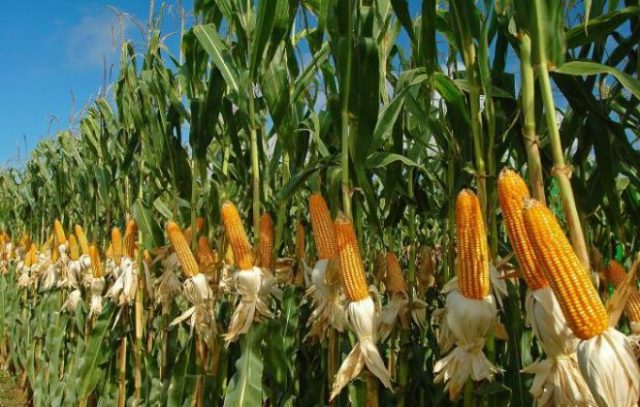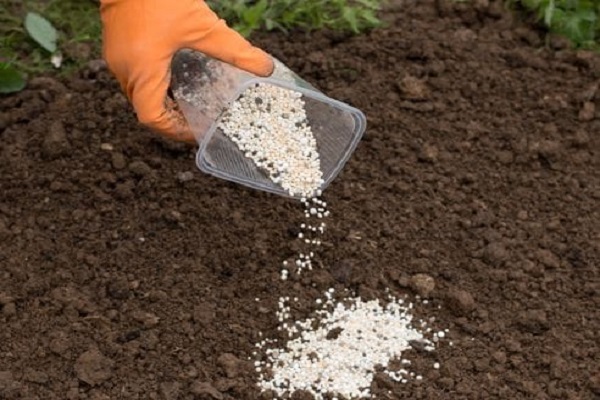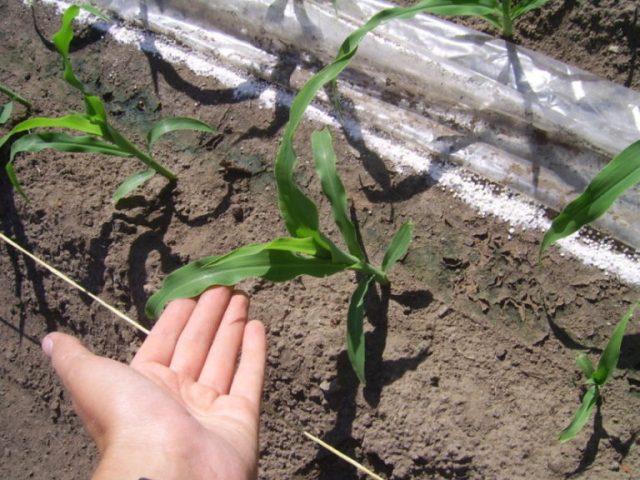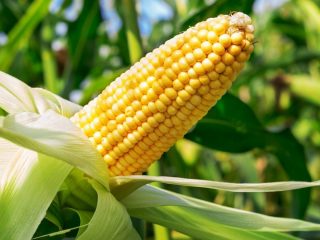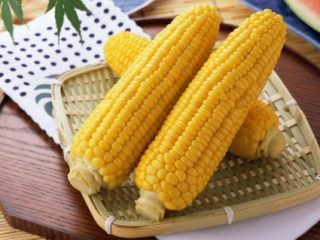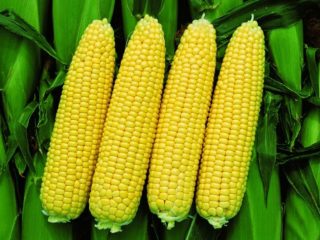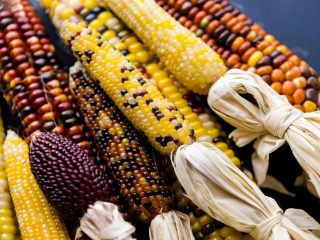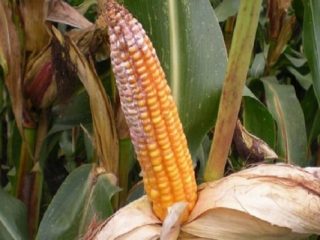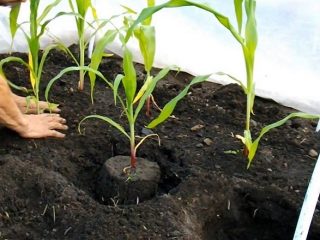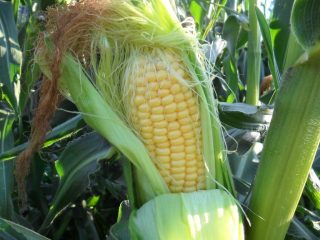Content
Corn feeding and yield are interconnected. Proper application of nutrients ensures intensive crop growth and fruiting. The degree of absorption of microelements depends on the structure, temperature, soil moisture, and pH.
What nutrients does corn need?
At different stages of development, corn's nutritional needs change. This must be taken into account when drawing up a fertilizing scheme. Active consumption of nitrogen (N) by corn begins at the 6-8 leaf stage.
Before they appear, the plant absorbs only 3% of nitrogen, from the appearance of the 8th leaf until the hairs dry out on the cobs - 85%, the remaining 10-12% - in the ripening phase. Corn yield and biomass volume depend on nitrogen.
Potassium (K) also affects yield:
- improves moisture intake and use;
- potassium supplements contribute to good graining of the cobs;
- increases drought resistance of corn.
Corn experiences the greatest need for potassium during the flowering phase.The crop needs less phosphorus (P) than nitrogen and potassium. This can be assessed by indicators of the digestibility of nutrients. With a productivity of 80 c/ha, the ratio N: P: K is 1: 0.34: 1.2.
Corn needs the nutrient P (phosphorus) in 2 phases:
- at the initial stage of growth;
- during the period when generative organs are formed.
It participates in the formation of the root system, has a direct effect on energy metabolism, promotes the accumulation and synthesis of carbohydrates, and participates in the processes of photosynthesis and respiration.
To fully absorb the NPK complex, corn needs calcium. With its deficiency, soil parameters deteriorate (physical, physicochemical, biological):
- there is an increase in specific density;
- the structure changes for the worse;
- buffering deteriorates;
- the level of mineral nutrition decreases.
A deficiency of magnesium (Mg) in the soil is manifested by low yield; its deficiency affects the processes of flowering, pollination, grain size of cobs and their quantity.
Growth vigor and nitrogen uptake are influenced by sulfur (S). Its deficiency is manifested by a change in leaf color. They turn light green or yellow. Taking this into account, it is necessary to fertilize corn growing in the country or in the field. In this case, it is necessary to remember the role of microelements on the enzymatic system of corn.
During the growing season, the crop needs zinc, boron, copper:
- copper increases the percentage of sugar and protein in grains, affects productivity and immunity;
- with a lack of boron, growth slows down, flowering and pollination deteriorate, the internodes of the stems are shortened, the cobs are deformed;
- zinc for corn comes first, it is involved in metabolic processes, growth vigor and frost resistance depend on it, and if it is deficient, cobs may be missing.
Types of fertilizers and application rates
The minimum amounts of fertilizers for corn are calculated based on the expected yield. The calculations are based on the crop’s need for basic nutrients.
Battery | Norm for obtaining 1 t/ha |
N | 24-32 kg |
K | 25-35 kg |
P | 10-14 kg |
Mg | 6 kg |
Ca | 6 kg |
B | 11 g |
Cu | 14 g |
S | 3 kg |
Mn | 110 g |
Zn | 85 g |
Mo | 0.9 g |
Fe | 200 g |
The standards are given for a plot of 100 x 100 m; if corn is grown on an area of 1 hectare (10 x 10 m), all values are divided by 10.
Organic
In the open ground at the dacha, in the field, liquid manure is traditionally used to feed corn. Infusion recipe for root feeding:
- water - 50 l;
- fresh mullein – 10 kg;
- leave for 5 days.
When watering, add 2 liters of liquid manure for every 10 liters of irrigation water.
Mineral
All mineral fertilizers, based on the presence of nutrients in them, are divided into simple, containing one nutrient element, and complex (multicomponent).
To feed corn, simple forms of mineral fertilizers are used:
- nitrogen;
- phosphorus;
- potassium
Potassium and phosphorus
To feed corn, highly concentrated forms of fertilizers are chosen. Of the phosphorus preparations, preference is given to:
- superphosphate;
- double superphosphate;
- phosphorus flour;
- ammophos.
With a yield of 1 t/ha, the norm of potassium fertilizers is 25-30 kg/ha. Potassium salt and potassium chloride are added to corn (in autumn).
Nitrogen
Fertilizers can contain nitrogen in amide (NH2), ammonium (NH4), nitrate (NO3) forms.The corn root system absorbs the nitrate form - it is mobile and easily absorbed at low soil temperatures. The plant absorbs the amide form of nitrogen through its leaves. The transition of nitrogen from the amide form to the nitrate form takes from 1 to 4 days, from NH4 to NO3 - from 7 to 40 days.
Name | Form of nitrogen | Temperature when applied to the soil | Peculiarities |
Urea | Amide | +5 to +10 °C | Autumn application is ineffective, nitrogen is washed away by melt water |
Ammonium nitrate | Ammonium | No more than +10 °C | Wet soil |
Nitrate | |||
UAN (urea-ammonium mixture) | Amide | Does not affect | The soil can be dry, wet |
Ammonium | |||
Nitrate |
Feeding corn with urea leaf by leaf
The intensity of nitrogen absorption increases by the time 6-8 leaves appear. This falls in the second half of June. The need for nitrogen does not decrease until the hair dries out. Foliar feeding of corn with urea solution is carried out in 2 stages:
- in the phase of 5-8 leaves;
- during the formation of cobs.
In industrial fields, nitrogen norms are 30-60 kg/ha. When growing corn on a small scale, use a 4% solution:
- water - 100 l;
- urea - 4 kg.
In ripe corn grains, the protein content increases to 22% when foliar feeding with urea. To treat 1 hectare, 250 liters of 4% solution are required.
Fertilizing corn with ammonium nitrate
Foliar feeding with ammonium nitrate is carried out when symptoms of nitrogen starvation appear. Deficiency is manifested by thin stems and changes in the color of leaf blades. They turn yellow-green. Norm for corn:
- water – 10 l;
- ammonium nitrate – 500 g.
Timing and methods of feeding
The crop needs nutrients throughout the growing season.Applying the entire amount of fertilizer at one time is not beneficial. Changes in the feeding scheme affect the yield and quality of the cobs.
The traditional nutrition system provides for 3 periods for applying mineral fertilizers:
- the main part is applied before the start of the sowing period;
- the second part is introduced during the sowing period;
- the remainder of the mineral nutrition is added after the sowing period.
Fertilizers before sowing corn
Organic matter (manure) and the required amount of phosphorus-potassium fertilizers are incorporated into clay soils in the fall (during autumn tillage). Manure is applied to sandy and sandy loam soils in the spring. During spring cultivation, nitrogen is replenished, ammonium nitrate, ammonium sulfate, and ammonia water are used.
Ammonium sulfate contains sulfur, necessary for protein synthesis, as well as ammonium (NH4). It is used as the main fertilizer for pre-sowing spring feeding of corn. The recommended fertilizer rate is 100-120 kg/ha.
Fertilizers when planting grains
When sowing, fertilizers containing phosphorus and potassium are applied. Among phosphate fertilizers, preference is given to superphosphate and ammophos. They are applied at the rate of 10 kg/ha. The effect of ammophos manifests itself faster. It contains: phosphorus – 52%, ammonia – 12%.
The granules are applied to a depth of 3 cm. Exceeding the recommended norms leads to a decrease in yield. Ammonium nitrate is considered the best nitrogen fertilizer. It is applied to the soil when sowing corn. The recommended application rate is 7-10 kg/ha.
Feeding corn after leafing
When the crop is in the 3-7 leaf phase, fertilizers are incorporated into the soil. Initially add organic matter:
- slurry - 3 t/ha;
- chicken manure - 4 t/ha.
The second feeding is carried out with superphosphate (1 c/ha) and potassium salt (700 kg/ha). For 3 weeks from the appearance of the 7th leaf, root fertilizing with urea is carried out. Corn is sprayed in calm weather, the optimal air temperature is 10-20 °C.
When industrially growing corn, fertilizing with UAN, a urea-ammonium mixture, is practiced. This fertilizer is used twice during the growing season:
- before the appearance of the 4th leaf;
- before the leaves close.
Corn plantings are watered with a liquid UAN solution in a volume of 89-162 l/ha.
During the first stages of growth, corn may develop symptoms of zinc deficiency:
- growth retardation;
- yellowish color of young leaves;
- white and yellow stripes;
- short internodes;
- dried out lower leaves.
Lack of zinc affects carbohydrate metabolism and affects the quality of cobs.
When symptoms of starvation appear, foliar feeding is carried out. Use zinc fertilizers:
- NANITE Zn;
- ADOB Zn II IDHA;
- zinc sulfate.
During drought periods, corn is fed with potassium humate. This allows you to increase the yield by 3 c/ha. Under normal humidity conditions, this figure increases to 5-10 c/ha. Foliar feeding is carried out in the phase of 3-5th and 6-9th leaves.
Advantages and disadvantages of fertilizers
When choosing a fertilizer, you need to take into account its positive and negative effects on the soil, and the specifics of its application.
Type of fertilizer | pros | Minuses |
Liquid manure | Increased yield | Crust on the soil after watering |
Ammonium sulfate | Low cost, improves fruit quality, increases shelf life, prevents the accumulation of nitrates | Acidifies the soil |
Urea | When feeding by leaf, nitrogen is absorbed by 90% | Ineffective in cold weather |
Ammonium nitrate | Convenient and quick application | Increases soil acidity |
CAS | There is no loss of nitrogen, the nitrate form promotes the proliferation of beneficial soil microflora, which mineralizes organic residues, this is especially effective when growing corn using technology | Very aggressive liquid, there are restrictions on transportation methods and storage conditions |
Superphosphate | Accelerates the ripening of cobs, increases cold resistance, has a positive effect on the quality composition of silage | Do not mix with fertilizers containing nitrogen (ammonium nitrate, chalk, urea) |
Conclusion
Properly organized feeding of corn is necessary throughout the warm season. It consists of basic and corrective measures. The choice of fertilizers and the application rate are determined according to the climatic conditions of the region, the composition and structure of the soil.
